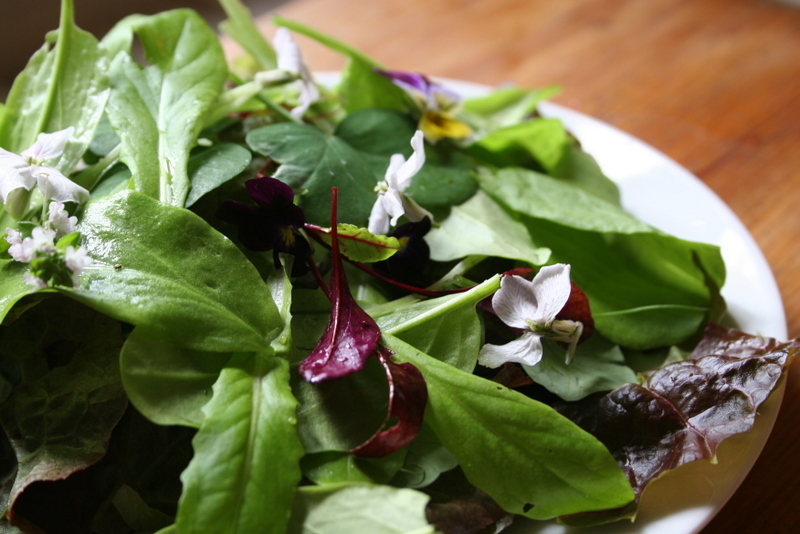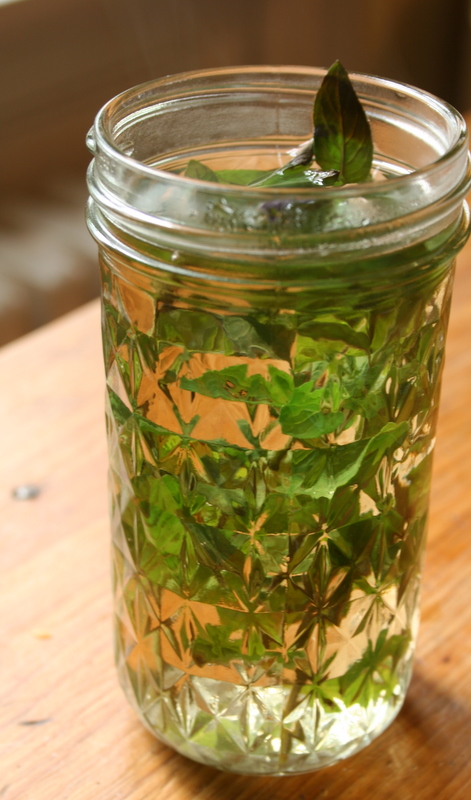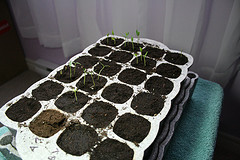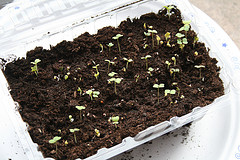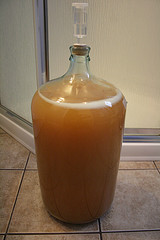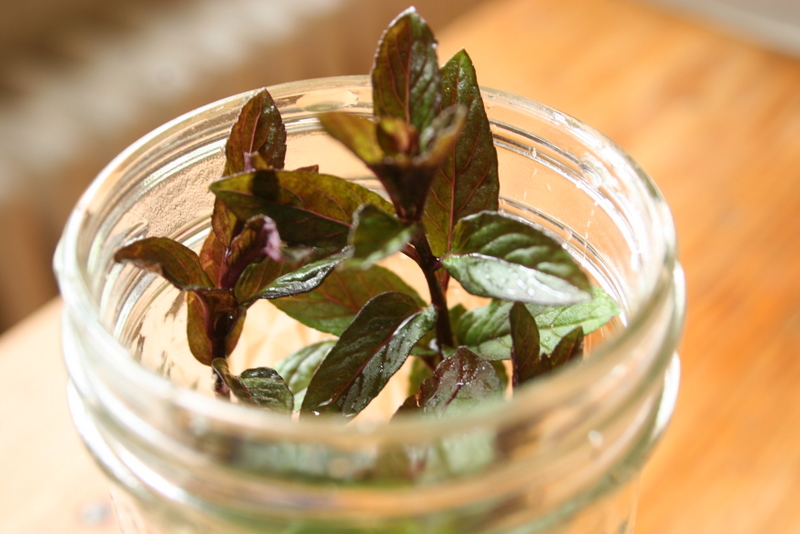 I am delighted to say that we have officially come to that point in the summer when I eat something I have grown or gathered every single day. Every day! Sometimes it's part of a main dish, like my grilled rapini pizza from a few weeks back, or like the turnip top quiche I made from my very own home-grown greens last week, or like the tasty pasta I whipped up with my first ever garden garlic scapes. Sometimes it's just a sprinkle of basil and parsley on my pasta, or some rosemary and lemon thyme stuffed inside a chicken. And almost every day it's a salad, or at least the bulk of a salad (sometimes I augment my pickings with local lettuce or microgreens).
I am delighted to say that we have officially come to that point in the summer when I eat something I have grown or gathered every single day. Every day! Sometimes it's part of a main dish, like my grilled rapini pizza from a few weeks back, or like the turnip top quiche I made from my very own home-grown greens last week, or like the tasty pasta I whipped up with my first ever garden garlic scapes. Sometimes it's just a sprinkle of basil and parsley on my pasta, or some rosemary and lemon thyme stuffed inside a chicken. And almost every day it's a salad, or at least the bulk of a salad (sometimes I augment my pickings with local lettuce or microgreens).
Between my vegetables, backyard fruit, edible flowers, herbs, and the berries I'll soon be foraging, I'm sitting pretty. The question is, how long can I keep it up?
Well, let me fill you in on my plan. For the next year, I plan to consume at least one thing I have grown or foraged every single day. For the next few months, it should be a piece of cake (and, indeed, it could actually be a piece of cake... blueberry cake, zucchini cake, green tomato spice cake...). Once winter sets in, things will get a little more difficult, but with some forethought I'm pretty sure I can do it.
I'm not talking about making every meal entirely, or even mostly, from ingredients I've grown myself. I would love to be able to do that, but it's not going to happen this year. No, just a little something every day to remind myself of my ultimate goal of greater self-sufficiency, and to lighten my load on the planet, even just a bit. Here's how I'm going to do it:
- Put up as many preserves as are reasonable. I emphasize "reasonable" because there are still some chutneys from 2007 in my pantry. My family eats lots of jam, jelly, and fruit butter, and not so much chutney.
- Freeze lots of berries, grated zucchini, ground-up green tomatoes, whole ripe tomatoes, chopped basil (if I manage to grow enough to warrant freezing, damnable slugs!), and other veggies and fruit for use over the winter.
- Dry lots of rose hips, mint, lemon balm, and other edibles for tea, and lots of fennel, dill, oregano, and other herbs for cooking. Dry my Filius Blue peppers and use them to heat up winter dishes.
- Plant my winter garden and see how long I can keep my kale, leeks, lamb's lettuce, purple sprouting broccoli, and spinach growing under cover (I'm reading How to Grow Winter Vegetables by Charles Dowding right now, and it's super inspiring).
- Bring my potted herbs indoors and tend to them lovingly through the dark months.
- Fire up the Aerogarden and the grow lights, grow greens indoors, and eat lots of sprouts.
- If I can find a guide, collect and dehydrate chanterelle mushrooms to use later in stocks and stews.







